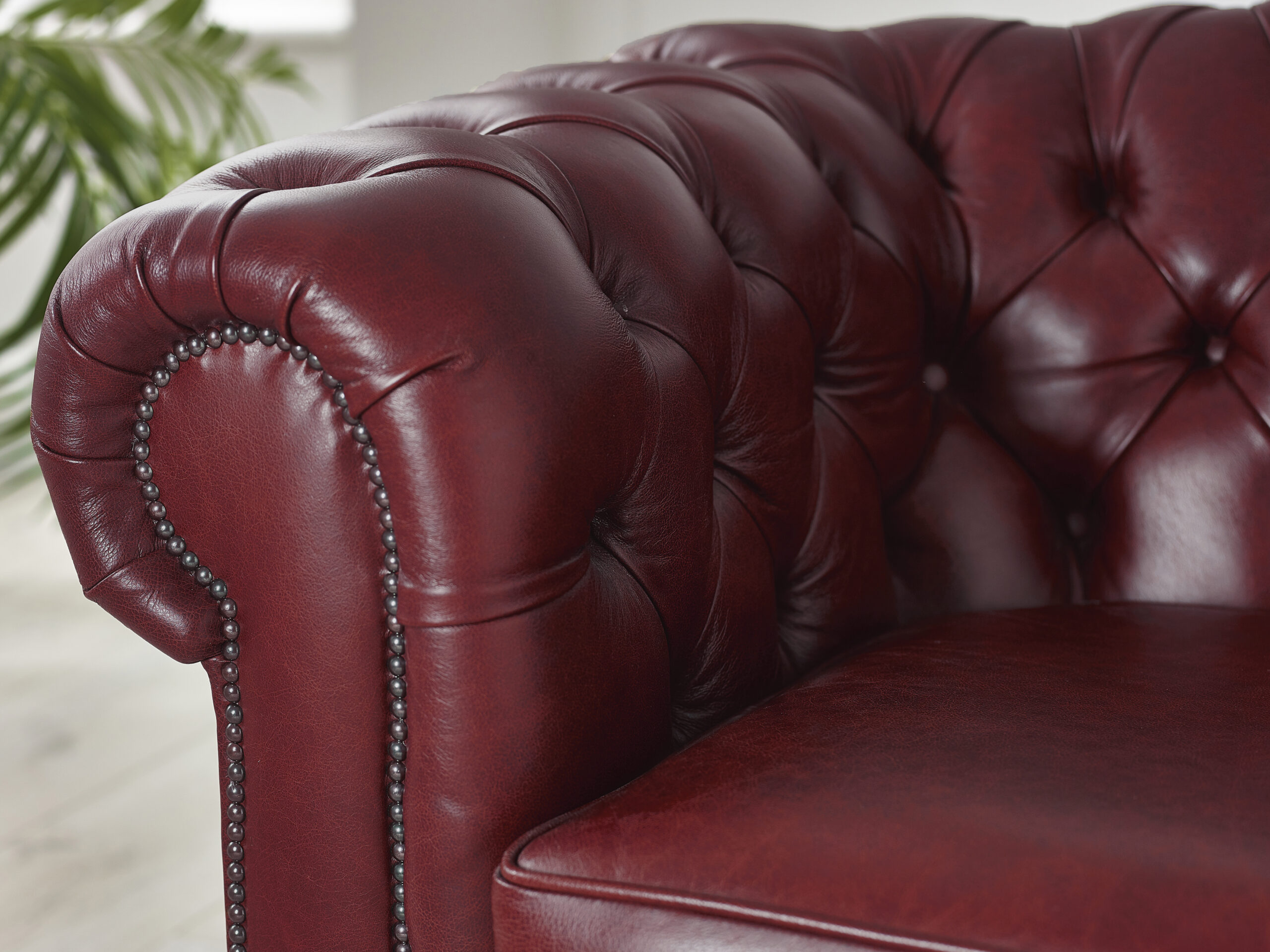
Picking the perfect sofa is a huge deal. It’s usually the heart of your living room – where you kick back, host friends, and maybe even grab a quick nap. But before you get lost in colour samples and layouts, there’s one big question to answer: should you go with fabric or leather?
Whether you’re eyeing a sleek, modern look or a timeless, more traditional piece like a classic Chesterfield, this choice sets the tone for your space. Both materials have their loyal fans and unique quirks. Let’s dive into the pros and cons of each to help you figure out what’s best for your home and lifestyle.
The Appeal of Fabric Sofas
Fabric sofas open up a massive world of style, texture, and affordability.
Pros of Fabric Sofas:
- Comfort is King: Fabric sofas generally feel softer and more inviting. They also breathe better, which means no sticky seats in summer or chilly touches in winter.
- Unbeatable Variety: From plush velvets and cosy chenilles to tough tweeds and crisp linens, you’ll find an astonishing range of colours, patterns, and textures. This makes it super easy to match your current decor, create a unique statement, or even find that perfect traditional print to complement your space.
- Budget-Friendly: Most of the time, fabric sofas are kinder to your wallet than their leather counterparts, offering great value for money.
- Adapts to Temperature: Fabric quickly adjusts to the room’s temperature, feeling cooler in warm weather and warmer when it’s cold.
- Enhanced Pet and Family Friendliness: Thanks to recent innovations, many modern fabrics are now engineered to be stain-resistant, easy-clean, and even waterproof. This gives you huge peace of mind against spills and accidents from both pets and children. Plus, certain tighter weaves and textured fabrics naturally stand up well against pet hair and minor scratches, making them super practical for busy households.
Cons of Fabric Sofas:
- Stain Magnets: Fabric is more porous than leather, making it highly susceptible to stains from spills. Spilled coffee, wine, or food can be a real headache.
- Allergen Traps: Fabric can trap dust mites, pet dander, and other allergens, which might be an issue if you or your family have sensitivities.
- Shows Wear: Depending on the weave and quality, fabric can show signs of wear, pilling, or fading over time, especially in high-traffic spots.
- Absorbs Odours: Fabrics can cling to lingering odours from cooking, pets, or even smoking.
Featured: Churchill Fabric Sofa, Penhurst Fabric Chesterfield Sofa, St Edmund Signature Fabric Sofa
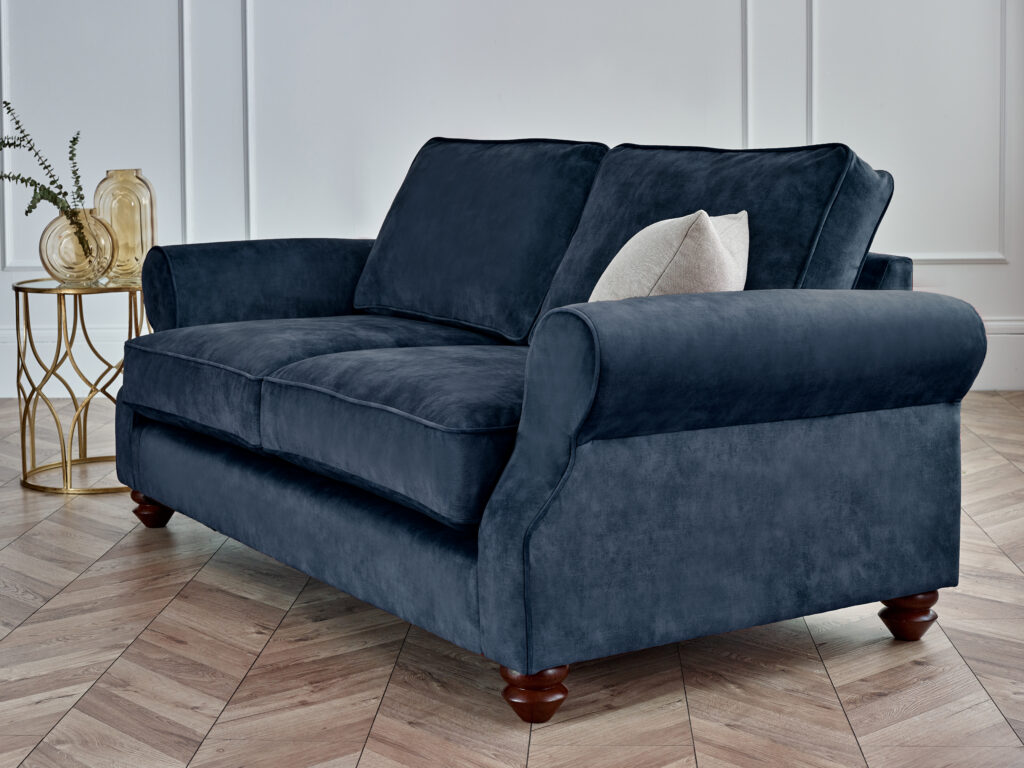
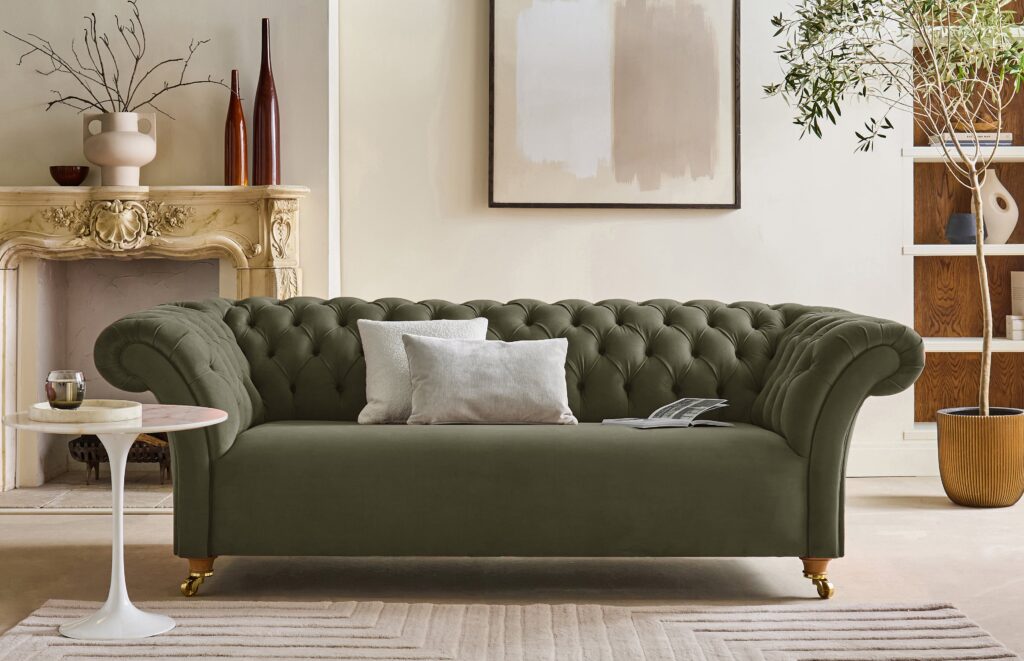
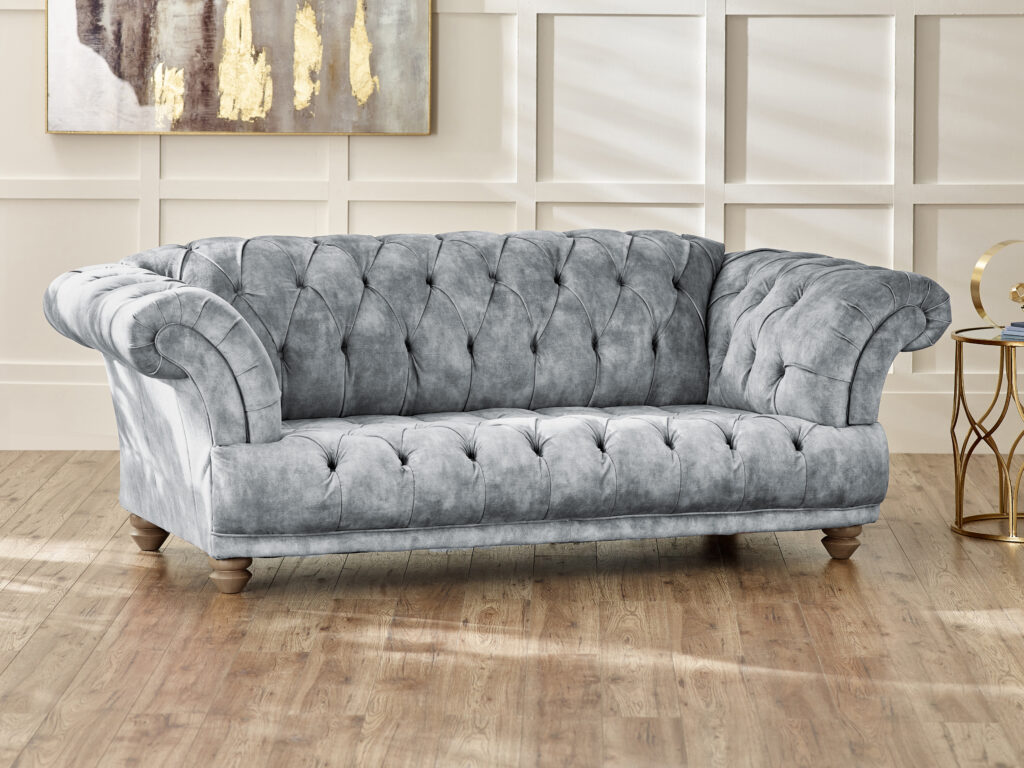
The Sophistication of Leather Sofas
Leather sofas exude luxury, durability, and a truly timeless appeal.
Pros of Leather Sofas:
- Built to Last: High-quality leather is incredibly robust. With the right care, it can last for decades, often looking even better as it ages and develops a unique “patina.”
- Easy Cleanup: Spills tend to bead up on the surface of leather, making them much simpler to wipe away than on fabric. This makes leather an excellent choice if you have kids or entertain often.
- Hypoallergenic Choice: Leather is less likely to harbour dust mites and pet dander, which is great news for allergy sufferers.
- Effortless Style: Leather sofas instantly bring a touch of class and sophistication. They truly elevate a room, from sleek modern apartments to grand, traditional settings where a classic Chesterfield leather sofa feels right at home.
- Odour Resistant: Leather is much less likely to soak up odours compared to fabric.
Cons of Leather Sofas:
- Higher Price Tag: Leather sofas usually come with a bigger upfront investment.
- Temperature Sensitivity: Leather can feel chilly when you first sit down in a cool room and might feel a bit sticky in very warm or humid conditions.
- Prone to Scratches: While tough, leather can get scratched, especially by sharp objects or pet claws. Minor scratches might blend in, but deeper ones can be noticeable.
- Limited Colour Options: While there’s a good range of natural leather shades, you won’t find the vibrant colours and intricate patterns that are common with fabric.
- Specific Maintenance: While spills are easy, leather needs special conditioning and care to stop it from drying out and cracking over time.
Featured: Harris Chesterfield Corner Sofa, Claridge Luxury Leather Chesterfield Sofa, Billingham Grey Chesterfield Sofa

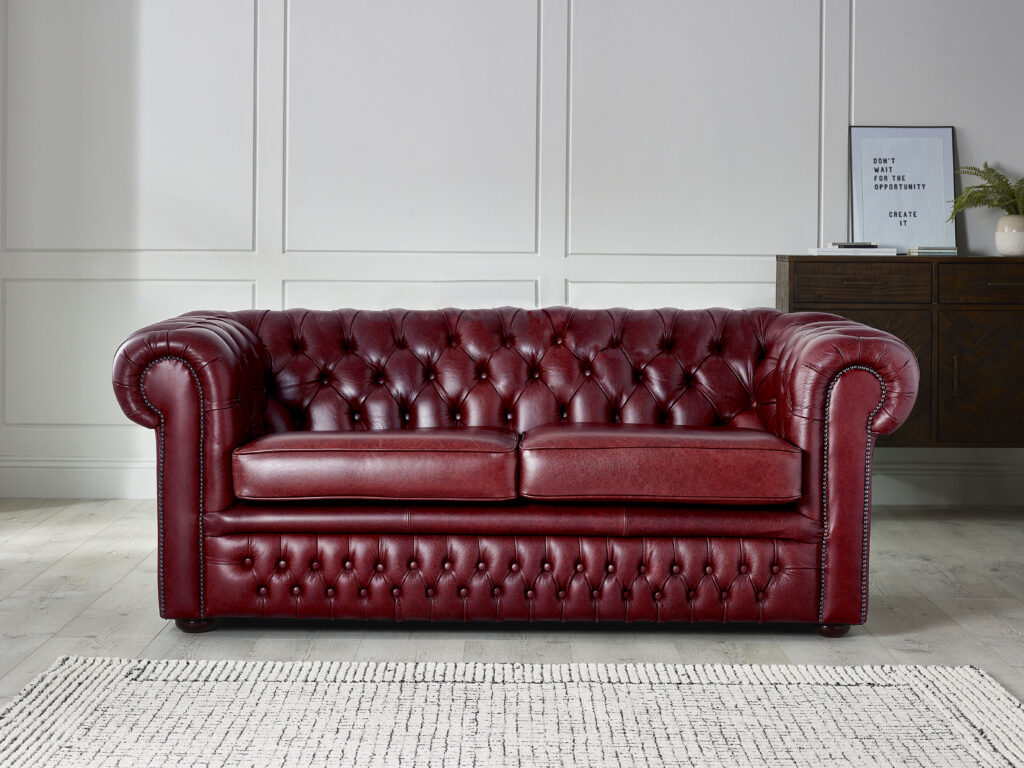
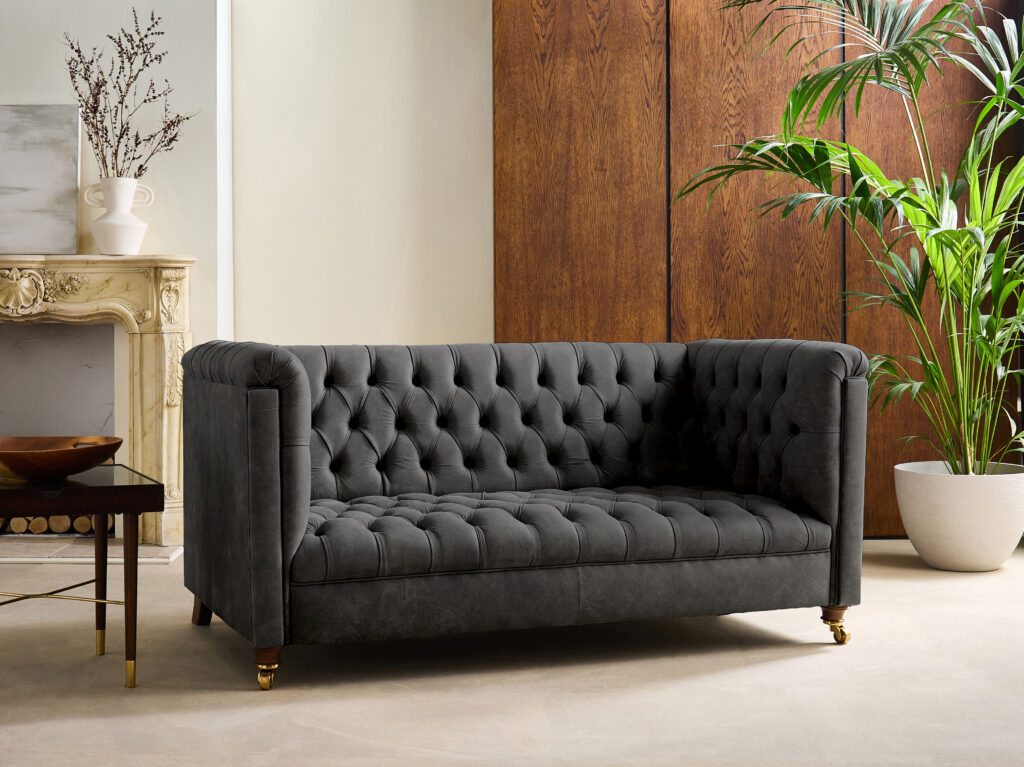
Customer FAQs: Your Sofa Questions Answered
To help you make an informed decision, here are some common questions customers ask about fabric and leather sofas:
Q: Which is better for homes with pets? A: This is a tough one! For dogs, a tightly woven fabric or certain types of durable leather (like corrected grain or protected leather) might be best. For cats, neither is entirely safe from claws. However, scratches on leather can sometimes be buffed out or blend into the patina, while fabric can snag and fray. Ultimately, nail trims and training are your best defence!
Q: I have young children. Which material should I choose? A: Leather is generally easier to clean for spills and messes. However, it can scratch if toys are dragged across it. Some performance fabrics are also excellent for stain resistance and durability.
Q: Which sofa type is more comfortable in different seasons? A: Fabric tends to adapt better to temperature changes, feeling warmer in winter and cooler in summer. Leather can feel cold initially in winter and sometimes a bit sticky in humid summer conditions, though it adjusts to body temperature.
Q: How do I clean my sofa? A: For fabric, always check the manufacturer’s cleaning code (e.g., W for water-based, S for solvent-based, X for vacuum only). For leather, wipe up spills immediately with a clean cloth. Regular dusting and annual conditioning with a leather conditioner are recommended.
Q: Will a leather sofa last longer than a fabric sofa? A: Generally, yes. High-quality leather, with proper care, can significantly outlast most fabric sofas due to its inherent durability.
Q: Does leather scratch easily? A: It can. While durable, leather isn’t immune to scratches, especially from sharp objects. However, minor scratches often blend into the leather’s natural character over time.
Q: Is a fabric sofa cheaper to maintain? A: While fabric sofas might have a lower initial cost, professional cleaning for significant stains can add up. Leather generally requires less frequent professional cleaning but does benefit from regular conditioning.
The Verdict: It’s All About You!
There’s no single “best” option when it comes to fabric versus leather sofas. The ideal choice depends entirely on your lifestyle, budget, aesthetic preferences, and how you plan to use your sofa.
- If comfort, warmth, and vast design options are your top priorities, and you’re prepared for the potential of stain challenges (or opting for modern performance fabrics), a fabric sofa might be your perfect match.
- If durability, easy cleanup, hypoallergenic properties, and a sophisticated aesthetic are what you’re after, and you’re willing to make a larger upfront investment, a leather sofa could be your living room’s next showstopper.
Take your time, think about what you really need, and perhaps even try sitting on both types of sofas in a showroom to truly get a feel for what works best for you. Happy sofa hunting!





